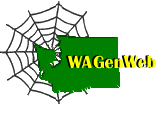Pioneer life in the Benton Co. WA area
Old Timer Recalls: Young, Old Pioneers Went Partners To Ferry Horses
By BURTON 0. LUM
Tri-City Pioneer
Sunday, August 7, 1960
Jade and Charley were two pioneers. Jade was a real pioneer who came by pack horse from Kentucky to the Oregon country in 1842. Charley was much younger and came from Comanche, Iowa, to Omaha and from Omaha by rail to San Francisco, then by boat to Salem, Ore., in 1873. His forefathers were pioneers of Connecticut, settling in Derby, when it was founded about 1639. Jade's last name was Switzler. Charley's was Lum. Jade was a "Reb" and Charley a "Bluebellied Yank". Jade was about six-foot-four-inches in height and lean. Charley was about five-foot-nine-inches and very powerfully built. Jade was old. Charley was young. They were opposite physically and their backgrounds were opposite also, but they were attached to each other by esteem, respect and affection. Jade would joke Charley about the "wooden nutmegs" they made in Connecticut and Charley would twit Jade about the "moonshine" of Kentucky.
The problem they were now considering was a serious one. How to power a ferryboat without a sail and wind, and with the materials they could afford during the hard times of the early 1890's. (Horses were selling for a dollar and a half a head.) A group of eastern capitalists claimed that they had secured a contract with the French Army to furnish 10,000 horse hams and had built a processing plant at Linten, a suburb of Portland. A large roundup was instigated. The buckaroos furnished five-riding horses, their own saddles, bridles, hobbles, lariats and other equipment and rode from sunrise to sunset for the munificent sum of $15 a month. The horses were to be rounded up and driven down the Washington side of the Columbia to a point opposite Arlington. They were to swim across to the Oregon side of the Columbia and then to be driven to the processing plant. Because so many horses were drowned in swimming the river at Arlington, the processing company offered Jade Switzler seven cents a head to ferry them across Columbia at Umatilla. There they could be driven down the Oregon side to the processing plant.
Well, charley came up with something as Jade "knowed" he would. Charley said to Jade, "I tell you what we can do. I can take the guts out of your horsepower hay bailer and by a little fixen' here, and there, install it in a scow, attaching the sweeps to driveshaft under the dunnage that will turn a paddle wheel on each side of the scow. Have the scow built wide and at least 45 feet long. The gunnels should not be less than four-inches thick. Build a corral that will hold 30-head of horses. Make a circular walk way at top gunnel height around the corral and paddle wheels, having it movable at each end of the scow to load and unload. The sweeps would go above the top of the corral. There will be a horse hitched to each end of the sweeps and the scow would always be in trim. A couple of kids can drive the horses and when more power is needed, the horses can trot or run.
"Now, Jade, I have a fine place to build it on my horse spread at Kennewick right where the steamboat 'City of Ellensburg,' the steamboat 'H. M. Nixon,' and the steam ferryboat 'Frederick K. Billings' were built. I know I can get the gunnel planks and other lumber cut at Enumclaw and shipped by the Northern Pacific to Kennewick." The horsepower ferryboat was built and launched at Kennewick and taken to Switzler's without accident over Humley Rapids and the other rough waters of the Columbia. The writer was one of the kids who drove one of the horses, Big Bill Switzler, a nephew of Jade's from Pendleton, drove the other horse. Bill was only 16 but he stood well over six-feet and weighed about two-hundred pounds. Years later he became famous as the “Impresario" of the Pendleton and other roundups, which were the grand-daddies of the present “rodeos." The ferry plied from New Plymouth to Umatilla. It took wild horses across to Umatilla and brought back to the Washington side whatever traffic that wished to cross. Charley Lum was the helmsman and captain of the ferryboat which had been nicknamed the "Coffee Mill Ferry." Charley got all the bugs ironed out of the craft and it was quite a success. The sheepmen who drove their flocks to summer range in the mountains engaged Charley to build them a couple of the "Coffee Mill Horsepower Ferry Boats." One was stationed at Wahluke, near Priest Rapids. Looking back over the years, I cannot remember the location of the other ferryboat.
Return to Index of Burton Lum Articles
